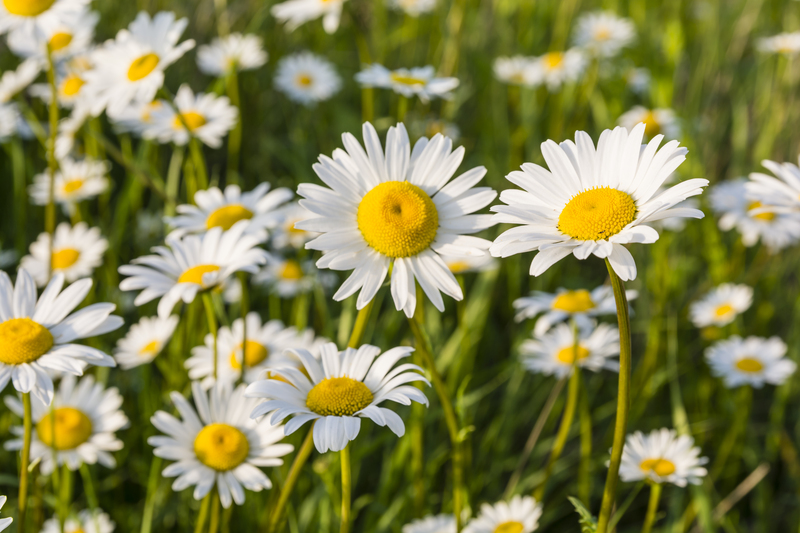A Guide to Building Your Own Vertical Garden
Posted on 11/06/2025
A Guide to Building Your Own Vertical Garden
Are you searching for ways to infuse a splash of green into your home or balcony? Vertical gardens--also known as living walls or green walls--are a fantastic solution for urban dwellers and garden enthusiasts alike. These innovative gardens can transform even the smallest of surfaces into lush, vibrant environments. In this comprehensive guide, we'll walk you through everything you need to know about building your own vertical garden, from the benefits to step-by-step instructions and maintenance tips.
Why Choose a Vertical Garden?
Building your own vertical garden opens up a world of possibilities for city living, balconies, patios, and even indoor spaces. Here's why they're gaining in popularity:
- Space-efficient: Ideal for maximizing small outdoor areas or apartments.
- Improved Air Quality: Plants filter and purify indoor air, reducing toxins.
- Enhanced Aesthetics: Adds a modern and lush touch to dull walls and fences.
- Thermal Insulation: Living walls can regulate indoor temperatures and reduce energy costs.
- Biodiversity: Attracts pollinators such as bees and butterflies.
- Food Production: Grow herbs, vegetables, and edible plants vertically!

Planning Your DIY Vertical Garden
Choosing the Right Location
Before you begin building a vertical garden, assess your available space. Consider factors such as:
- Sunlight: Does your chosen wall get direct sunlight, partial sun, or is it mostly shaded?
- Accessibility: Can you easily reach the garden for watering and pruning?
- Structural Support: Ensure the wall or fence can hold the weight of your living wall structure and plants.
- Waterproofing: For indoor vertical gardens, make sure the wall is protected from moisture damage.
Selecting a Vertical Garden Design
There are numerous approaches for DIY vertical garden projects, each with their own benefits:
- Pocket planters: Fabric or felt pockets mounted on walls--perfect for herbs and annuals.
- Modular panels: Stackable systems that allow plants to grow from small cells.
- Pallet gardens: Wooden pallets repurposed for planting--very popular for rustic, affordable green walls.
- Recycled materials: Innovative use of old bottles, shoe organizers, or gutters for a sustainable approach.
- DIY trellises: Frameworks for vine-type plants.
Essential Materials & Tools for Your Living Wall
To set you up for success, gather these essential supplies for your do-it-yourself vertical garden project:
- Vertical planter system: Pockets, panels, recycled containers, or framework.
- Mounting hardware: Screws, anchors, or brackets as needed for your wall type.
- Quality soil: Well-draining potting mix tailored to your chosen plants.
- Fertilizer: Organic or slow-release granular fertilizer for ongoing nutrition.
- Drip irrigation system: (Optional) For larger or outdoor vertical gardens to ease watering.
- Tool kit: Drill, measuring tape, screwdriver, garden gloves, trowel, and shears.
- Waterproof backing: (For indoor gardens) Prevents water leakage.
Step-by-Step Guide: How to Build Your Own Vertical Garden
Follow these steps to construct a thriving DIY vertical garden:
1. Plan Your Layout
Sketch your desired arrangement on paper, mapping out plant placement based on their sun and water requirements. Consider starting small if this is your first green wall project.
2. Prepare Your Wall
If building an indoor vertical garden, protect your wall with a waterproof layer such as plastic sheeting. For outdoor projects, ensure the wall or fence is stable and clean.
3. Install the Frame or Planter Panels
Mount your chosen planter system securely using appropriate hardware. Modular panels or repurposed pallets should be anchored firmly to the wall.
4. Add the Growing Medium
Fill your planters or pockets with a lightweight, moisture-retentive potting mix. Avoid standard garden soil, as it is too heavy and may not drain well for vertical systems.
5. Arrange and Plant Your Chosen Species
Select vertical garden plants suited to your conditions. Start by planting the largest specimens at the bottom and trailing or lightweight plants at the top and middle. Gently firm the soil around roots and water thoroughly.
6. Set Up Watering Solutions
For small vertical gardens, hand-watering may suffice. For larger setups, install a drip irrigation system or self-watering planters for convenience. Remember, vertical gardens often dry out faster than traditional beds.
7. Add Mulch and Fertilizer
A thin layer of straw or bark mulch retains moisture and discourages weed growth. Apply fertilizer as needed according to your plant's needs.
8. Maintain and Prune Regularly
Check your vertical wall garden weekly: water, trim, and remove any yellowing leaves. Watch for pests and ensure plants don't become root-bound.
Best Plants for a Thriving Vertical Wall Garden
Selecting the right plants is crucial for a successful vertical garden installation. Consider these top choices:
- Herbs: Basil, mint, parsley, thyme, oregano, and chives--ideal for kitchen vertical gardens.
- Vegetables: Leafy greens (lettuce, spinach, arugula), bush beans, small chili or tomato varieties.
- Succulents: Sedum, echeveria, crassula species for sunny locations with minimal watering needs.
- Ferns and shade lovers: Boston fern, maidenhair, pothos, or philodendron for shady indoor walls.
- Flowering plants: Petunias, impatiens, pansies, lobelia for bursts of color.
- Vines and creepers: English ivy, creeping fig, or sweet potato vine for natural green cover.
Tip: Pay close attention to sun, temperature, and watering requirements when selecting your plants!
Creative Vertical Garden Ideas
- Shoe organizer garden: Hang a canvas shoe organizer on a wall, fill pockets with soil, and plant herbs or flowers.
- Mason jar wall garden: Attach mason jars to a recycled wood plank to create chic indoor herb gardens.
- Plastic bottle garden: Repurpose plastic bottles as planters and mount in rows for a sustainable project.
- Gutter garden: Use old rain gutters fastened horizontally to walls for strawberries, lettuce, and herbs.
- Reclaimed pallet wall: Fill a wooden pallet with landscape fabric and soil for a rustic DIY green wall.
Maintaining Your Vertical Garden for Longevity
Watering and Moisture Control
Vertical gardens often lose water faster than traditional planting beds. Regular monitoring and an efficient watering system are vital. Drip irrigation ensures even water distribution and minimizes root rot and overwatering risks.
Fertilizing
Apply a balanced, slow-release fertilizer every 4-6 weeks during growing seasons. Foliar feeding can also be effective for leafy greens.
Pruning and Replanting
Trim overgrown or dead foliage to encourage healthy growth and prevent disease. Refresh soil and replant annuals seasonally for continuous color and yield.
Common Challenges in Building Vertical Gardens
- Poor drainage: Causes root rot--use coarse, well-draining potting mix.
- Uneven sun exposure: Adjust plant selection according to light levels at various heights.
- Wall damage: Always waterproof interior walls and regularly check mounts for outdoor installations.
- Difficult maintenance: Design for easy access or use modular panels for plant management.

Frequently Asked Questions About DIY Vertical Gardens
Can I build a vertical garden indoors?
Absolutely! Indoor vertical gardens need proper waterproofing and access to indirect sunlight or grow lights. Choose shade-tolerant plants like ferns, moss, and philodendron varieties.
How much does it cost to build a vertical garden?
Costs vary depending on materials and size. DIY systems using recycled materials can cost under $50, while larger modular systems or commercial installations run several hundred dollars or more.
Do vertical gardens attract pests?
As with all gardens, living walls can attract pests. Regular inspection, proper spacing, and natural pest control (such as neem oil or companion planting) help prevent infestations.
Conclusion: Transform Any Space With a Vertical Garden
A vertical wall garden is more than just a trend--it's an efficient, eco-friendly way to maximize your green space. By following this comprehensive guide, you can enjoy the satisfaction of growing your own herbs, vegetables, or ornamentals in even the tightest spaces. Remember, start small, choose your plants wisely, and keep consistent with maintenance. With these tips and a bit of creativity, your DIY living wall will soon become the highlight of your home or garden.
Ready to get started? Gather your materials, dream up your design, and bring your very own vertical garden to life today!

